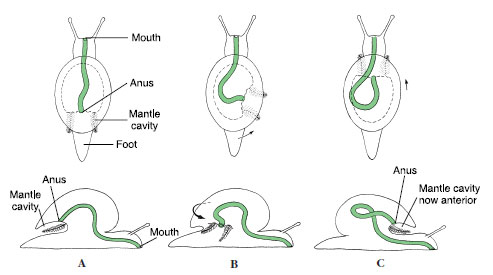
Adaptation
Here are some
adaptations that are typical of most terrestrial snails, not
just specific to S.
exodon.
One of the most
basic and recognizable forms of protection in snails is their shell.
These diverse forms that cover the body of snails are made of
calcium carbonate (Hickman et al. 2012).
The shells of snails are covered in a protein that is able to
protect the calcium from erosion and the shells get thicker as the
snail grows (Hickman et al. 2012).
The shells of
snails also contain an operculum which is a plate that can cover the
opening of the shell if the body is pulled inside. The operculum is
used for protection and helps prevent water loss
(Hickman et al. 2012).
Most mollusks
contain a structure in their mouths called a radula
(Hickman et al. 2012). A radula is a
tongue-like organ that contains a membrane filled with tiny teeth
that are able to scrape, cut, tear or pierce food particles
(Hickman et al. 2012). The radula also
has a retractor and protractor muscle that allows it to be moved in
or out of the mouth (Hickman et al. 2012).
Snails are
believed to be one of the first animals to become terrestrial
(Hickman et al. 2012). Evolving from
water to land animals required the development of lungs instead of
gills to breathe (Hickman et al. 2012).
One of the most interesting adaptations that snails have undergone through evolution is torsion of their body within their shell. Torsion occurs during development and allows snails to have only one opening in their shell for easier protection (Hickman et al. 2012). Through the process of torsion, the body is twisted 180° within the shell allowing the mouth and the anus to exit the shell at the same point (Hickman et al. 2012).
